There's something about Calcutta
A night and a day reconstructed from phone photographs, notes and memory
Calcutta. Sprawling, stinking, sweet Calcutta. I took a train from Dhanbad Junction to Sealdah, feeling rather content as I watched the boundless plain through the dirty window. The sunlight outside was dirty too, and in between texting friends and chatting with a co-passenger (a YouTuber who said I can’t imagine how much money he makes), I tried to guess what was growing in the fields fed by the weak winter light and gushing Finolex pipes.
At Sealdah, I made my way through the throng, grateful for the sharp nip in the air. My denim jacket and travel-weariness made me feel sexy, like an unconventionally good-looking hero of a Shoojit Sircar film, at home amidst the babble of Bengali and the kind of Hindi spoken in Bihar. Since the possibilities seemed endless in the moment, I allowed myself to be persuaded by a young hustler to drop me to my hotel in Ballygunge on his motorbike.
As I rode pillion, I took in my first few breaths of the streets of Calcutta, the whole heaving humanity of it, and the screaming yellow cabs with the ‘No Refusal’ signs and bespectacled drivers. Even the exhaust being belched by the lurid blue-and-yellow buses (all of which seemed to be going from Kamarhati to Alipore Zoo) couldn’t kill the buzz of a new city on a pleasant night, with no one to call on or answer to.
As we careened on APC Road, I half-heard the hustler’s diatribe on ride-sharing apps while taking in the smell of frying poppy seeds and the taste of dust. I was really in Calcutta, almost four years to the day from my last trip here, which was also the last trip I’d made before the world closed down because of the pandemic and changed my life as I knew it.
I’ve presented myself as footloose in the preceding paragraphs, but I’m a more rigid traveller than I ever was. For instance, I knew exactly where I wanted to have dinner that night and I wasted no time in leaving for a bougie eatery in Hindustan Park after dropping my maroon suitcase and laptop bag in the hotel.
At Sienna Cafe, which was done up in the hipster way that makes city-slickers like me feel comfortable, I was led to a blue-tiled table within earshot of three Bengali woman who were discussing the fabric and design for a chef’s apron. The chef among them was gorgeous, speaking a British-accented English with a smattering of Bengali, her hands moving this way and that as she detailed her artistic vision in a mildly nasal and highly attractive voice. I gathered that she was in the city of her youth for the winter, and I wondered about my own friends who live outside—at what point of their month-long trips to the motherland do they start longing for their independent lives abroad? I would last 4 days, I thought. Above us, there was bamboo, cane, a canopy of cloth and pretty little yellow lights
After main course, I wanted dessert, so I got dessert. The smallest things are thrilling on a solo trip, imbued with meaning and feeling. It was makha sandesh with fresh strawberries, wood apple and nolen gur. As soon as it landed on my tongue, I forgot the women on the next table; concerns over my weakening eyesight; the little corpses in the graveyard of my creative dreams. It was just my tastebuds and the sandesh, in a delicate dance that my feet could never manage.
The next day was Republic Day. I woke up at 6.30am, bathed and put on the denim jacket that makes me feel more confident. I booked an Uber to the North Port Police Station, which was the starting point for a heritage walk I wanted to do. The radio in the car played “Door hato duniyawalo, Hindustan hamaara hai” while I watched Calcutta limber up in the morning light. As we approached the CESC building from Chowringhee Road and then zipped past it on Central Avenue, I had a vision of Calcutta as it probably saw itself—at the centre of things, the grandest metropole this side of London. Faded glory is one of my favourite tropes so maybe this is why I was so happy in Calcutta. The city seemed chill about the fact that it was something once but now it is not.
But all my lazy, romantic assumptions were thwarted on the walk, led by T, a passionate Calcuttan with a smile that reached her eyes. My co-walkers were C & R, residents of Bromley, London. From the eastern end of Howrah Bridge, T presented us with a vista of the flower market. We took in the thick ropes of marigold, the sellers with their morning mufflers and brown sweaters, the orange flags sticking out from the shanties. Down at the Mullick Ghat, we stood on the slippery landing and watched the Hooghly, grey under the smog and silent in the face of the blaring horns from above.
T showed us many things, all while fluently narrating anecdotes from the past and present of her city. A cavernous room that was used by women to change after a dip in the river was now used as a flower godown. There, we saw dirty green-and-white tiles engraved with roses. In the market on the way back up to the bridge, T got a lotus-seller to coax a flower to life by gently running his fingers over the petals. C, polite to a fault, held on to the precious gift, even at the cost of taking pictures on the way.
On the other side of Howrah Bridge, we hopped onto a ferry, walked across it, and then jumped over to another boat that had docked adjacent to the ferry. As we sailed under Howrah Bridge, I thought of how nice it would be to capture the essence of this city on film, the way I think Mani Ratnam, Shoojit Sircar and Sujoy Ghosh have done. I marvelled for a moment at how easily the mind reaches for the reference of a moving image, captured by a camera one day and then consumed in a dark room many months or years later—cinema is truly the top dog in the hierarchy of arts; writing and painting don’t come close. I would like to direct a movie some day but it feels impossible from where I am now.
I saw a couple at the head of the ferry, silently holding hands, as if drinking in this January morning on the Hooghly. And my mind went back to a hotel room in Dhanbad from a couple of nights ago, where the wives of my friend’s friends lovingly listed their husbands’ quirks. And then further back to December, to a chilly terrace in Mahabaleshwar, where a woman lifted the cap of a hoodie to cover her man’s ears, in an action so natural and matter-of-fact that I felt this must be love.
In Kumartuli, where we disembarked after crossing the hulking remains of jute godowns on the west bank, T got us to cross the railway tracks and enter the potters’ colony. Idols of Saraswati were being prepared for the upcoming Puja—“Bengali Valentine’s Day”, T told us with mirth. Peeking into various cramped workshops, we saw how an idol was put together—life breathed into the straw scaffolding by mud, lime, paint and fabric. It was dark in most of the workshops, and men (and one woman) seemed to be working with focus and faith. Muddy rivulets had formed on the ground, ruining the sneakers of the tourists who’d come to gawk.
At the end of the lane, T announced the end of the walk, but not before showing us a water hydrant that was some 150 years old. On her recommendation, C, R and I took an Uber to Kona Dukaan at Dalhousie Square, to grab a bite. But they were winding down, so we waited for another Uber to take us to Park Street while the last of the Republic Day processions petered out in front of the black anti-riot vans of the Kolkata Police.
On Park Street, as we munched on kathi rolls, C & R asked me intelligent questions about the political and social climate in India. They seemed to be such engaged travellers, keen to unravel the layers of meaning they’d been bombarded with in their travels across this vast land. I considered myself lucky to have spent the morning with such polite and curious people.
After we parted, I hopped across the street to Flury’s, where I ordered a puff and a pot of Darjeeling tea. The puff’s ratio of flaky to crusty was just perfect, and the thing disintegrated in my mouth and not on my plate, which is how I like my puffs. Spoilsports would say ‘oh but you paid 10 times you would in a local bakery’ but to them I’d say that sometimes you don’t want a puff from a local bakery, you want a puff from an iconic eatery on an iconic street in an iconic city. So yes, on that day, only a Flury’s puff would have done.
Then, I crossed over to the Maidan, the vast expanse where mostly young people were playing cricket, having picnics or just shooting the breeze. From a distance, it looked like a lovely place to take in the mild afternoon sun. Up close, the grass looked parched and it was strewn with litter. Still, I was taken in by the hazy vision of the Victoria Memorial in the distance—its cupola floating above the trees like some imperial fantasy—so I started walking towards the southern end. When I reached the road again, I was seized by a different idea. I’d seen a signboard for Shakespeare Sarini (unforgettable name), and I remembered it as the street on which Hotel Astor was.
Astor was where I’d stayed on my first ever trip to Calcutta, in 2003 or 2004, to represent my school in the national rounds of the Bournvita Quiz Contest. So, for old times’ sake, as a hat-tip to the wide-eyed little boy I used to be, I crossed the road and onto Shakespeare Sarini for a glimpse of Hotel Astor.
On the way, I passed a dilapidated building called King’s Court, where I spotted a rufous treepie on a high branch. The gnarly roots of a banyan tree had attached themselves to the dusty brick of the building and the green slatted windows were broken in places. If you feel this description and this post are going nowhere, you’re right. Kind of like my Astor mini-excursion. There was no great denouement there, no catharsis for our first-round exit from the quiz show, our humiliation on national television. The spruced-up building with its red brick is still very much there, looking spiffier and much bigger than I remembered it (hello, child’s perspective).
Then, I took a yellow cab to India Coffee House, inspired by a suggestion by S, my favourite Calcuttan. The cab dropped me off on a pavement where the booksellers of College Street were hawking their wares, perhaps to a sparser crowd than usual because of the public holiday. I looked around while crossing the tracks, but no tram was forthcoming and I made a mental note to look up routes and frequencies to see if I could get on one later.
Before I took the grimy stairs up, I took a photograph of the impossible tangle of electricity meters that looked like they were older than the water hydrant T had shown us in Kumartuli. Almost every inch of the walls was covered in political notices and announcements about cultural events. Again, this challenged the stereotype of indolent Calcutta. The notices conveyed a sense of urgency. The city is home to busy people who are always organising and attending things. This idea was tempered again by the atmosphere of the Coffee House, where cigarette-smoking men gave the impression that this is how they have been spending their evenings since youth.
Behind my window-side table on the first floor, there were a couple of women talking about boy trouble. What a grand place for young women to discuss boy trouble, the languorous, unhurried environs of the Coffee House. The ceiling fans whirr glacially, time flows like a river here.
And that’s why I lost track of the clock in the Coffee House—editing photographs, eavesdropping on conversations, texting, fretting about work and money. Before the sun was out, I wanted to take a photograph of the mosaic art on the exit of the Maidan metro. I walked to the Central Metro, passing sewers, a line of Muslim-owned shops specialising in wedding bands and the Calcutta Institute of Tropical Medicine.
The dinginess of the Central metro station came to me as a surprise. In recent years, I’ve used the overground metros of Bombay and Bangalore, and, most frequently, the brightly-lit stations of the Delhi metro. This one reminded me of some of the U-Bahn stations in East Berlin. I was also thinking of the cold shock of watching that terrifying Bob Biswas scene in Sujoy Ghosh’s Kahaani.
I got the photograph of the Maidan mosaic, but not quite in golden light, as I’d hoped. As shadows fell, I walked over to Blue Poppy Thakali, a restaurant I first heard about when Chef Sachiko Seth appeared as a guest on the delightful YouTube series Rannaghore Ke? After dinner, I walked around some more, considering whether to have a coffee, thinking about how best to further juice this feeling of anonymity and abandon. I wondered what it might be like to live in Calcutta, in a house with chequered floors on a road named after an Englishman. As I walked, I listened to Rashid Khan’s Aaoge Jab Tum Saajana. He’d died a couple of weeks before. I was in his city.
By 9pm, I was in the four-poster bed in my hotel room. The mattress felt a little too soft that night. The din of the cars on the street below carried through the wooden slats. But my legs felt good. I had walked long and hard, and I was being rewarded with the sweet pain of exertion. Sprawling on the clean linen of a hotel room after a long day has to be one of life’s greatest pleasures. And then, there’s something about Calcutta.


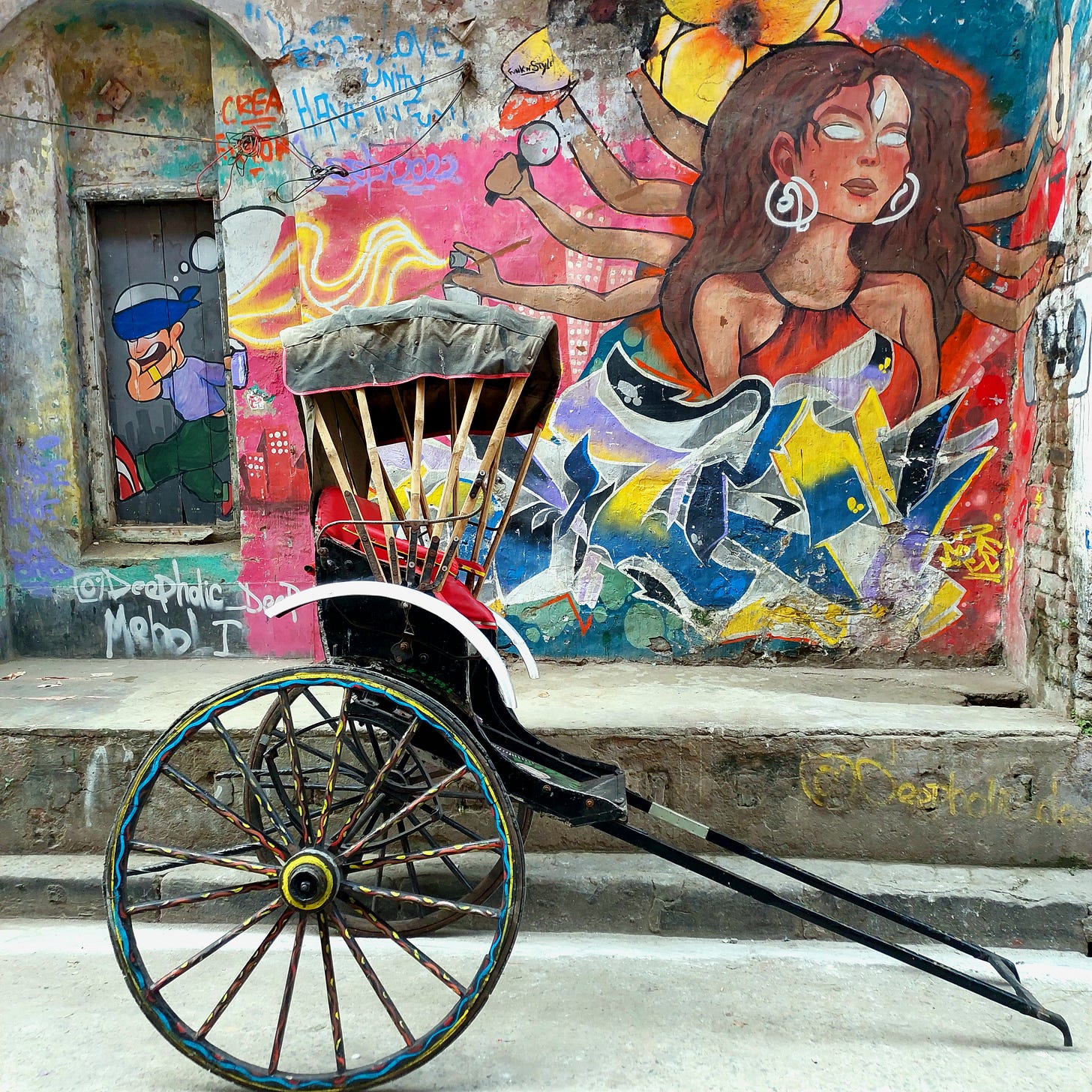
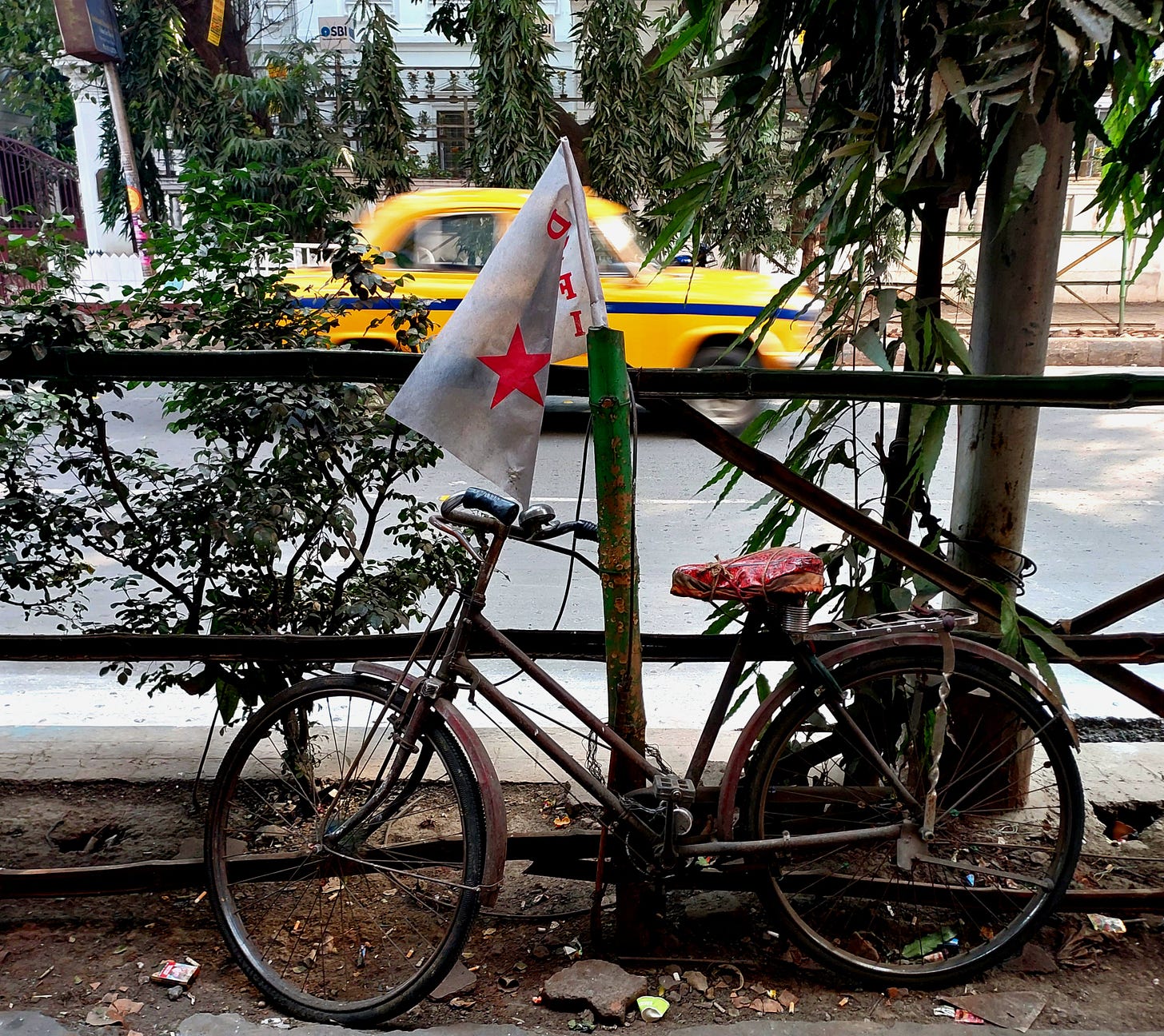
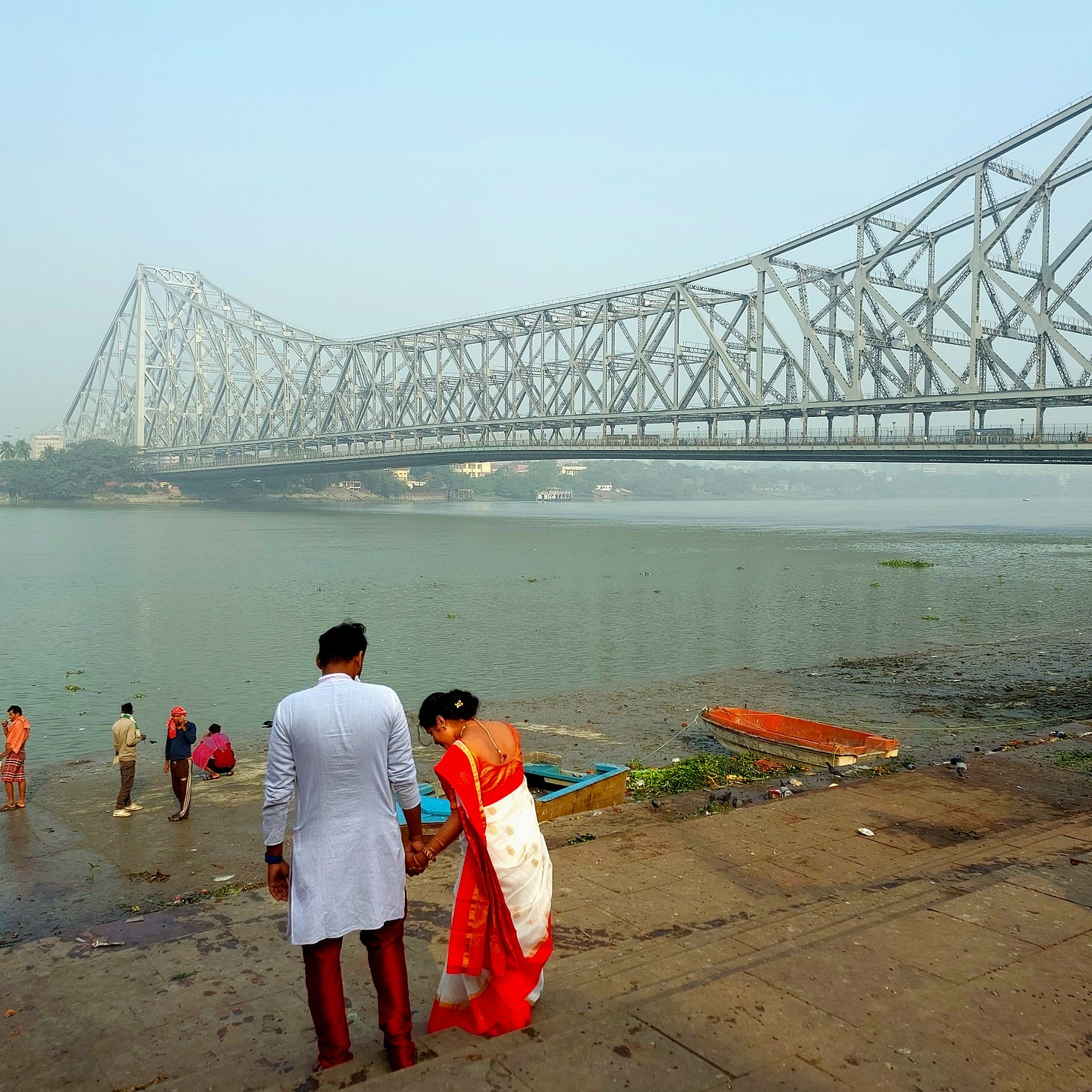


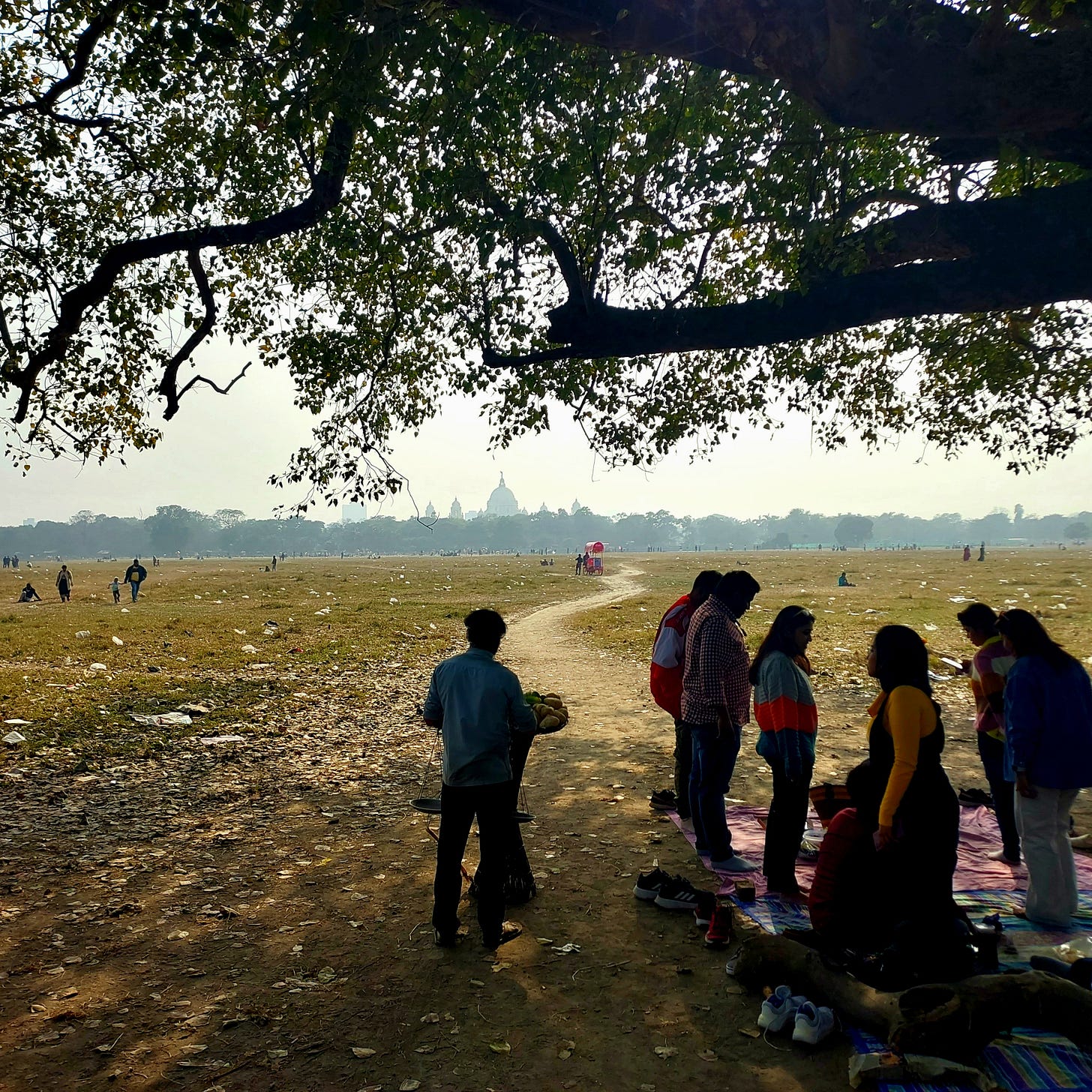
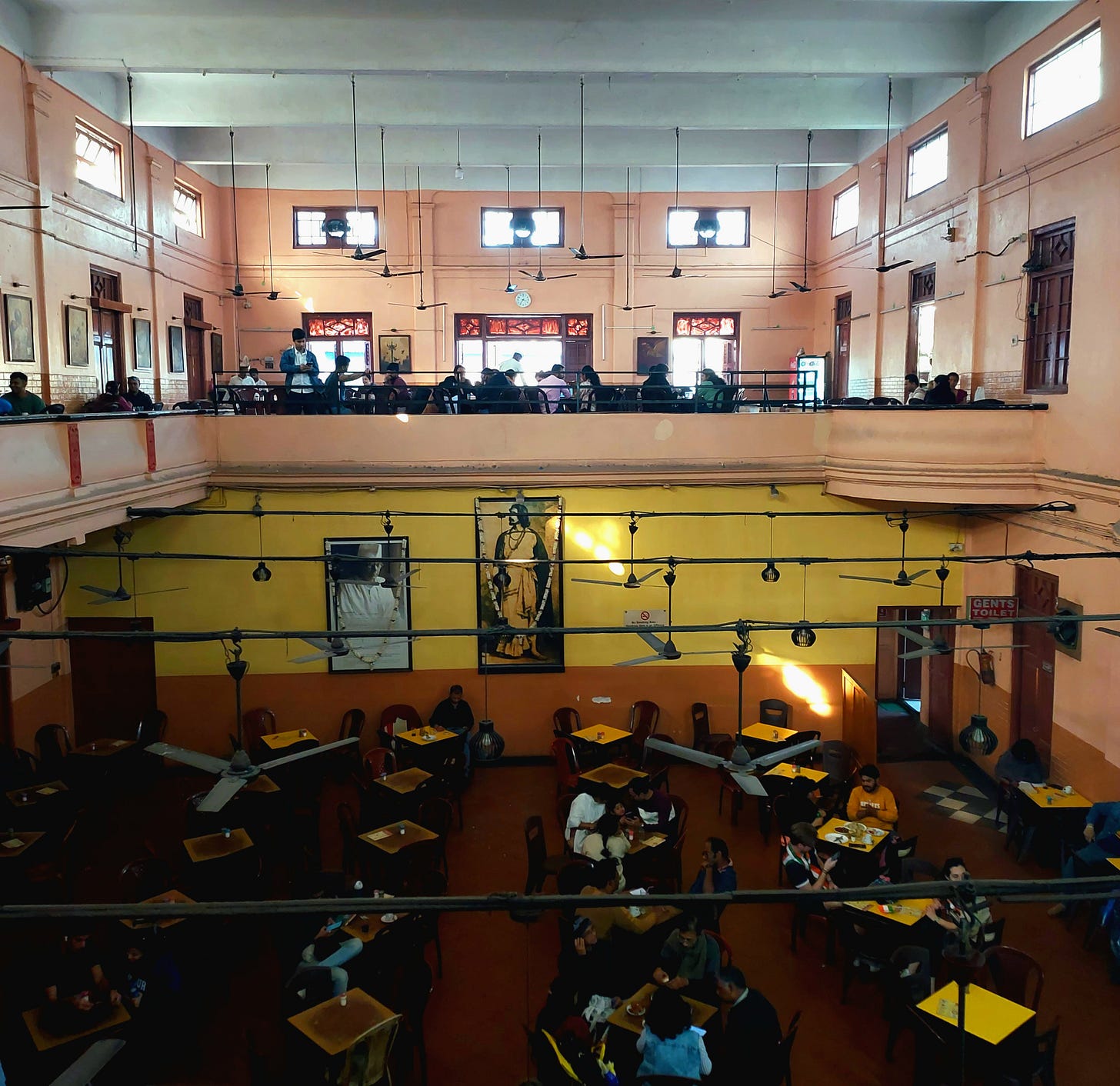
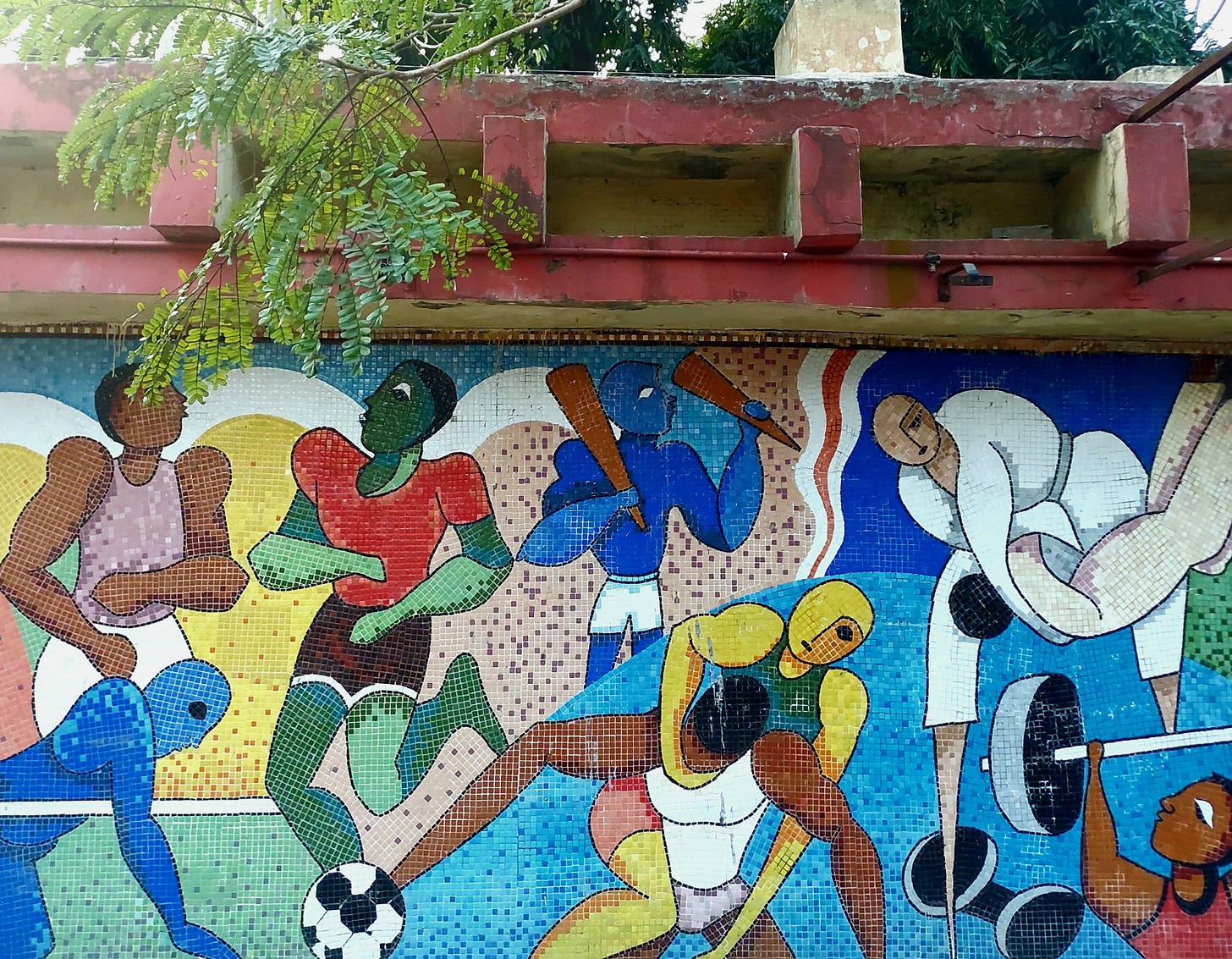
I am going to visit Kolkata for the first time in a week, and was looking for travelogues when I found yours. Your description of the city is fantastic. I didn't know I could fall in love with Kolkata more. PS: Do recommend more things to do in the city!
I have somehow managed to not visit India Coffee House despite being in Calcutta so many times! Those two paragraphs and the photo have sold me even more! Next time, Insha Allah